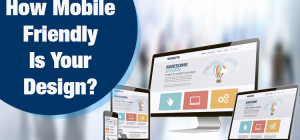 Visually attractive web page attracts visitors to your website. That visual element is definitely the first experience a visitor will get once visiting your web page. If your website has beautiful and clear design, your visitor will feel comfortable and he or she will continue browsing your webpage. If your website has poor and not so good looking design, chances are that the visitor will go and find different webpage with similar content as yours. Many web developer companies such as Asapy web development, Penguin Desings, Devcyper, Eximius Solutions and others are following the same rules portrayed here. So…
Visually attractive web page attracts visitors to your website. That visual element is definitely the first experience a visitor will get once visiting your web page. If your website has beautiful and clear design, your visitor will feel comfortable and he or she will continue browsing your webpage. If your website has poor and not so good looking design, chances are that the visitor will go and find different webpage with similar content as yours. Many web developer companies such as Asapy web development, Penguin Desings, Devcyper, Eximius Solutions and others are following the same rules portrayed here. So…
What is web design really?
Web design is process of creating a website which includes design, concept, development and maintenance. Good design of a website allows users to get the desired information fast and without any troubles.
Functions of good web design
- Website design needs to be attractive and easy-to-use at the same time. With your design you are allowing users to reach your content. That design needs to be attractive, but it also needs to be a fast connection between the visitor and your content.
- You need to create a website where each page of your website looks like a part of your whole web setting.
- You need to create a website that users will easily use and navigate intuitively
- You should create a website that will use all available visual potential, thus making it more attractive.
Basic principles of web design
1. Element alignment on a page – creating a grid
All elements on your page including ones in the header, footer, on the sides, central parts, all graphic and textual elements on the page must be aligned. By aligning left edges of elements for examples title, subtitle and texts, you will create a better perception of connection between your elements which will ultimately give your users better look and feel of the whole visual structure.
2. Element balance
Each element on the has its weight and size, for example title size, font color intensity or position of the graphic objects. There are two basic types of visual balance: symmetric and asymmetric. Symetric balance is the one where elements of compositions are balanced on both sides divided vertically or they are centered on a webpage.
3. Element unity
Different elements of composition interact between one another. Unified composition will create a unified look, and your website will look like a whole rather than gathering of different elements. Unity of elements can be accomplished via two different forms: proximity and repetition.
Proximity allows perception between elements. For example putting links next to each other in global navigation and by adding of white space between them and main title (h1).
Repetition is best done via colors, shapes, textures or similar objects which will allow the perception of connected elements on the page.
4. Contrast
Contrast is putting of different graphic or textual elements on the page for the purpose of highlighting different things on the web page. For example, you can achieve contrast by using serif fonts such as Times New Roman or Georgia for titles and sans-serif fonts such as Arial or Verdana for textual content and paragraphs. Contrast can also be achieved by combining colors, sizes and shapes.
5. Element consistency
By using element consistency you will create a perception of participation of elements on your web page, thus creating visual stability and unique identity of your web page. For example navigation elements such as menu, social media icons, search or identification elements such as logo must always have the same place on each page throughout your website (for example at the top of the page). This rule also applies to other important elements such as local navigation, languages and main titles.
How to create a successful web site?
Well, in order to be successful website must have all of the following elements:
- Design – attractive and engaging visual design
- Content – relevant and useful content for targeted visitors
- Easy to use – simple, accessible and easy to use web pages
- SEO – Search Engine Optimization – a website adjusted and targeted to reach the best possible position on search engines
However, each different user has a different goal, that’s why the term successful web page is always interpreted differently.







![Understanding Colors in Graphic Design [Infographic]](https://lerablog.org/wp-content/plugins/wp-thumbie/timthumb.php?src=http://lerablog.org/wp-content/uploads/2013/06/beautiful-book-wallpaper-1024x640.jpg&w=300&h=140&zc=1)